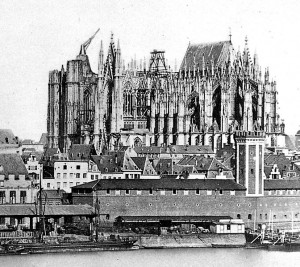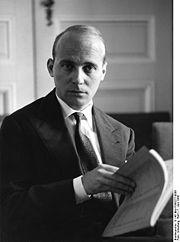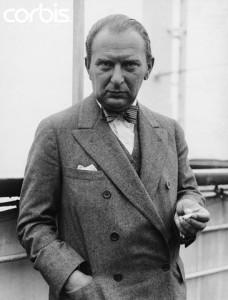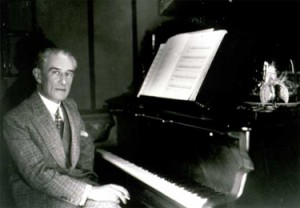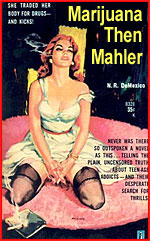On the respective New Year’s Eve offerings of the Vienna and New York Philharmonics
and what they say about art, culture, Alec Baldwin and ball gowns.
Aside from the fact that these were both orchestra concerts played in major cities and broadcast on TV, there’s not many points for comparison between these two concerts. Rather, there are numerous points for contrast, contrasts that illustrate why the NYPhil concert totally sucked donkey and why the Vienna Phil concert, though perhaps not my favorite NYE concert they’ve ever given, was infinitely better in every way. I’d like to look at all aspects of these musical broadcasts to find out why:
1. Repertoire
Everyone (OK, not everyone) knows what to expect from a Vienna Philharmonic NYE concert: a selection of the finest Viennese bonbons, a delightful mix of Struass waltzes, polkas and overtures. More than just owning this music, the musicians have it flowing thick through their veins. They are living, breathing torchbearers of a centuries-old tradition, a particular musical tradition which represents the very best of Austrian culture. The great thing is that this repertoire runs rather deep – every year, there is a healthy mix of favorites (Blue Danube, Radetzky, Fledermaus) and hidden gems (this year, the Wiener bonbons, Die Rheinnixen and the Champagner-galop).
Now let’s contrast that with the New York Phil’s offering: we began with music by Aaron Copland, America’s supposedly great composer with the least to back up that reputation (or, if we consider “The Tender Land”, the most to outright refute that reputation), including the single most overplayed piece of American music, the Suite from Appalachian Spring, which, despite having some very beautiful moments, is hardly a way to start off a festive gala concert!!! Yes, those beautiful moments do exist in the score, but there is SO much drab writing in between. Don’t get me wrong – it’s not that I think it’s a bad piece of music, but I don’t think it quite merits its frequency on programs by American orchestras, and it certainly had no place “kicking off” what should have been a joyous musical occasion.
Then we came to Copland’s “Old American Songs”, of which there are quite a few, and from which certain were chosen. However, whereas Mo. Prêtre chose a splendid assortment of better and lesser known gems from the vast trunk of dances by Herr Strauss Sohn, Mo. Gilbert and Mr. Hampson seemed to choose the lamest songs from Copland’s collection. And that’s really saying something, let me tell you.
Ugh God, then we come to the Cole Porter songs, which nearly brought me to tears of pain and embarrassment. Thomas Hampson is simply wrong when he said in his little interview (on which, more later) that opera singers are enriched by singing classic songs and enrich the world of song by singing them. If anything, it’s a one-sided proposition, and the “world of song” is getting along just fine without the help, thank you very much. TH singing “Night and Day” sounds as stupid, if not way, way stupider, than Sting does singing Dowland. I’m all for artistic versatility, but this does not qualify as such: it is true crossover trash. “Crossover” is really a dirty word as far as I’m concerned, as it nearly always refers to an artist talented in one genre who dabbles in another with inevitably tragic results. Hence, TH and Cole Porter.
On a related topic, Why can’t American opera singers fucking sing English diction??? Are they really so over-trained and psychologically screwed up that they can’t make natural, understandable words in their native language? Thomas Hampson gets up there and sounds like José Carreras singing Tony from West Side — it’s just not natural. And it’s like, dude, come on – you grew up in Spokane. Didn’t you ever listen to Sinatra? Shouldn’t you, like, know how to sing? Then the NYPhil program announcer says something like, “Thomas Hampson having a ball, singing into a microphone like a Cabaret singer”. Um, IF ONLY.
Oh! And on another related topic – how about telling us who wrote the orchestrations of the Porter numbers? The announcers made such a big deal about how Copland didn’t write any of the “Old American Songs”, but rather selected and arranged them. Well, Cole Porter sure as hell didn’t arrange his songs, and yet he was given sole writing credit. I’d love to know who provided those arrangements (which, generally, were far superior to any of Mr. Copland’s!) I’m almost positive that “Where is the Life that Late I Led” was the original Broadway orchestration (by RRB).
In all fairness, I do like An American in Paris and I thought it was about the only thing that ought to have been on this concert. See, the big programming problem is, this isn’t really OUR music, not the way that the Strauss waltzes belong to the Viennese. I don’t criticize the NYP for wanting to put on a festive, All-American New Year’s Eve program. But this ain’t it. I think that our closest equivalent of the Viennese dance repertoire is the Great American Songbook, but if you’re going to do that, it would help to get people who can actually sing it. Now, truly, I don’t know how many of those people are really kicking around (they sure as hell aren’t on Broadway), but you could at least look for one.
But really, what is “our American music”? Admittedly, the Strauss dances are really the music of conservative Viennese society. What is the music of our conservative society? I really don’t think there is one. Even the middle-aged generation of our conservative society isn’t uniformly familiar with the Broadway catalog of Porter and Hammerstein. They were all raised on their own regional, vernacular music. As Americans, we don’t really hold on to artistic traditions – we constantly innovate and reconstruct, always chasing the popular taste. Personally, I don’t think that’s a bad or a good thing – it simply is what it is. But just don’t play Appalachian Spring on your NYE concert, please.
2. Conducting
Never having really seen Alan Gilbert conduct much of anything, I’ve given him the benefit of the doubt in the past, since, well, he is the Music Director of the New York Philharmonic. But now I’ve seen him in “action” (really stretching the term) and I’ve got to wonder: WHY? Why in the world did the NYP choose such a dud to head their institution? I am quite positive that I have never seen such a bland podium presence in front of a major orchestra. Speaking of which, the man conducts these players like they’re a bunch of middle schoolers. That being said, he does have about the most perfect technique of any professional conductor I’ve ever seen.
But what’s the point of having a great technique when you’re the conductor of the New York Phil? I am an advocate of conductors having good technique, as I think that most of the big podium stars lack it, but those same men and women prove that it’s not really all that necessary when you stand in front of a fine body of musicians. Take Georges Prêtre. It’s not that he has “bad” technique, it’s just that he uses precious little technique at all. Rather, he exudes charisma, charming the musicians into playing with gobs of style. With subtle looks and gestures, he colors a chord here, turns a corner there, and adds an extra layer of character and refinement to the already splendid playing.
The point is, orchestras at the level of the NY and Vienna Phils will give back what you give to them, and I’m sorry to say, in the case of the NYP on New Year’s Eve, they played just as blandly as Gilbert conducted. Prêtre played old chestnuts and, while thoroughly respecting their many layers of accrued tradition, found new ways of phrasing the music. Take the English Horn theme in the Fledermaus overture, for example. That had some really unexpected little twists and turns. Great for him. Gilbert, on the other hand, simply took worn-out warhorses and walked them around the stable.
3. Direction
OK, so the production style of the Vienna Phil concerts is clearly a matter of taste. BUT, at least they have a style and they stick with it and try to do it at the highest level. I used to really abhor all of the dancing and museums and horses, and even though I don’t really like it now (I would much prefer to just watch the orchestra playing all the time), I do respect the fact that those sequences offer visual variety that probably draws in the average viewer. Although, I do miss the old days when it was really over the top (in the most conservative sense, of course:)
But at least it’s well done. The NYP concert looked so incredibly amateurish. Way too many cuts, WAY too many close-ups. And why is it that every time they cut to a new shot, they seemed to catch some string player making a mistake? Did those players plan it that way, like as a joke? I’m guessing not. Frequently the cameramen couldn’t find their players, etc., etc.
4. Hosts
I know that Alec Baldwin is trying to re-invent himself as this sort of priest of High Culture, hosting classic film programs on TMC and voicing the NYP radio broadcast series, and maybe he’ll finish the job that he started, but for right now, it ain’t working. His interviews with Alan Gilbert and Thomas Hampson were so totally forced and un-edifying (admittedly, once he and TH got warmed up a little and Mr. Baldwin threw in a couple comparisons with acting, the interview gained a slight interest). But honestly, that little pre-filming patter at the beginning about not eating menthol? Come on!! Are you fucking kidding me?? This is supposed to be entertaining?
I’m sure the New York Phil wet their panties when they got Baldwin on their books, but shouldn’t a big Hollywood star actually like exude some glamor and charisma? Lend a desperately needed touch of class? Too bad.
Meanwhile in Austria, we see Julie Andrews, conservatively attired, hanging out at a little Viennese candy shop. What’s not to like? It’s class personified. And in New York, nobody could even get Alec Baldwin’s bow tie on straight??? Which brings me to my next subject…
5. Clothing and Gowns
In a word, the attire of the New York Philharmonic was: trash. It was so inconsistent – half of the men just defaulted to their usual white tie, and the women were split between Board/CEO business suits and Halloween costumes. And Alan Gilbert wore, you guessed it, the most boring outfit he could possibly find. WHY WON’T CONDUCTORS WEAR FUCKING BOW TIES ANYMORE? What is the deal here people?? Would it have killed him to wear some kind of festive, whimsical bow tie and suspenders? I’ve seen Esa-Pekka do it before…
Obviously, the New York Phil was trying to create a casual atmosphere, as all American orchestras are, all the time, and that’s exactly what’s wrong. Look, American musical institutions are simply going in the wrong direction by condoning and encouraging the casualization of their audiences. Great performances of the finest art music ought to merit a little self-respect on the part of the attendees. I know it’s supposed to be about the music, and it is, so why not show the music and yourself a little respect? You know, for institutions that are so desperately trying to attract new audiences, the people at the top might want to take a gander at what new audiences are looking for. Whenever I go to the CSO and I see young people who are clearly not musicians and who are obviously there for the first time, they tend to be young businessmen, out on a date with beautiful young ladies. And they almost always look over-dressed, because they are well dressed. My point is that it’s not their fault — they’re obviously wanting to have a classy night out on the town, to look good and to gain access to a certain slice of society.
Then they show up and they’re surrounded by the so-called “cognoscenti” who dress down in blue jeans and flannel shirts because “it’s all about the music” and they can’t be bothered to put on a tie. Well guess what, it is all about the music, but it’s also about the concert. And a concert is a certain type of experience. Rather than trying to kowtow and capitulate to the increasing casualization of society at large, I guarantee that orchestras would garner more success in attracting new audiences by upholding a certain sense of style and formality. Just look at opera houses!
Or better yet, look at the Vienna Philharmonic. The gentlemen of the orchestra looked just wonderful in their uniform suits. M. Prêtre was the epitome of gentility. The ballerinas were dressed by Valentino for God’s sake!! The only misfire there was the slight brownish hue of the top gauzy layer of the pink dresses, which may have just been the lighting or something.






